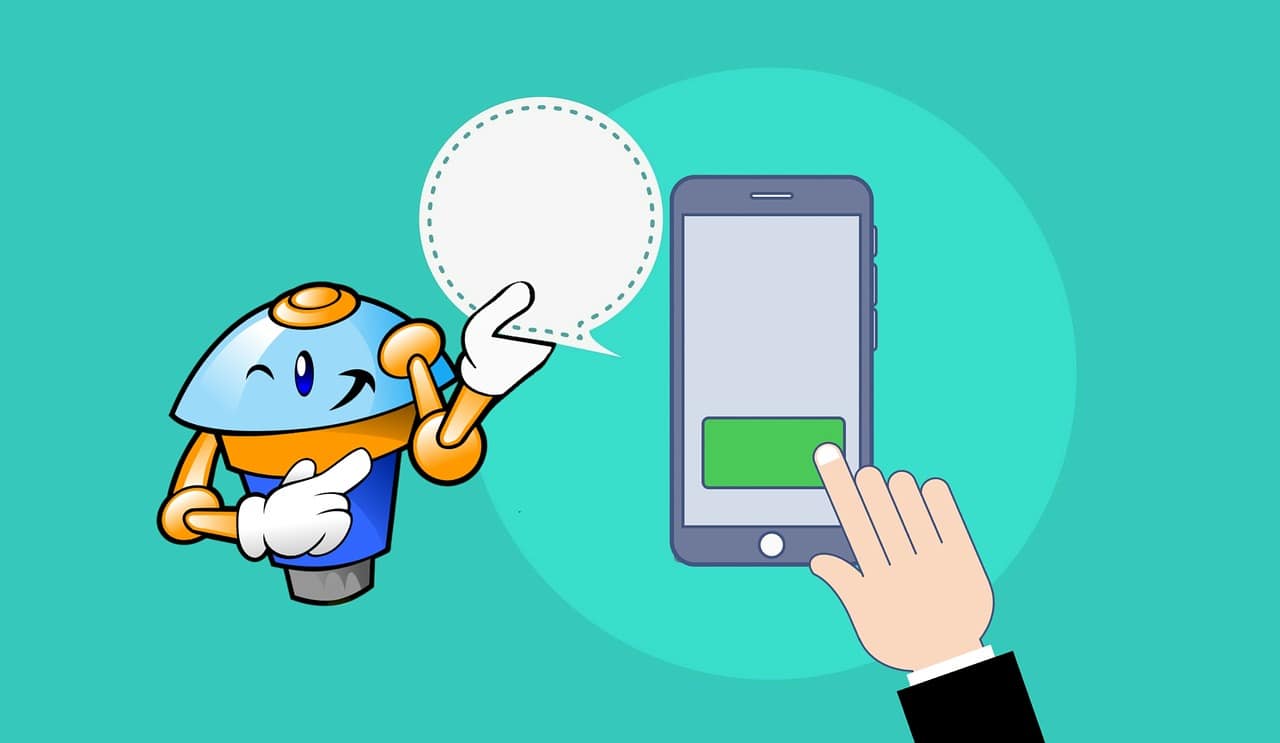The idea of the chatbot, or conversational robot, is not new.
However, there’s a world of difference between the first machines trying to pass the Turing test in the 1960s and the chatbots found on websites today.
There are several types of chatbots, each offering a different user experience.
Let’s see exactly what an e-commerce chatbot is, what it can bring to your online store and how to set it up. 
A little history
The very concept of the chatbot dates back to 1950, when the now-famous mathematician Alan Turing created the famous “Turing test”.
This test, described in his book ” Computing Machinery and Intelligence “, consists of putting two humans and a computer in contact via networked computers.
Communication is based on questions and answers.
If the tester is unable to determine which of the interlocutors is a computer, then the software has passed the test.
Since the 1960s, there have been many robot candidates, with varying degrees of success.
- The first was called Eliza, and was capable of rephrasing questions in the manner of a psychotherapist.
There have been writer chatbots, psychologist chatbots… - Then in the 2000s, with the development of the Internet, messaging chatbots appeared.
- In 2006, IBM Watson specialized in answering Jeopardy questions.
- From 2010 onwards, artificial intelligence really came into its own in chatbots, and Apple ushered in a new era with the introduction of Siri on iOS.
- Google retaliated with Google Now;
- then Amazon with Alexa ;
- and Microsoft with Cortana.
As the number of users grew, so did the competition between the various players looking to gain market share.
Chatbots have thus appeared on websites to enhance the user experience and try to win the loyalty of potential customers.
Different types of chatbots
There are many different types of chatbots.
They vary according to their interface, technical features and user experience.
Chatbots equipped with buttons
These are the simplest chatbots.
They respond to user interactions via buttons.
When a question is asked, several answers are proposed via buttons.
Depending on which button the user clicks, the chatbot’s response will be different.
It works in much the same way as a MCQ.
These chatbots are very effective, as they can quickly provide an answer to a question.
They are also very limited by the number of questions and answers available.
The relationship with the customer can therefore only go so far.
Chatbots based on keyword analysis
No button in a chatbot using keywords.
Here, users can enter their own questions.
The choice of answer is made using keyword recognition in the question and (limited) artificial intelligence.
Offering more possibilities than button-based chatbots, they are nevertheless liable to provide incorrect answers, or at least different ones from those expected by the user.
For example, if the same keyword appears in several possible questions, the selected answer may not be the right one.
Contextual chatbots
Contextual chatbots are the most advanced.
Coupled machine learning and artificial intelligence are used to determine the right answer to a question.
While the contextual chatbot has a large amount of data on which to base its answers to the questions it is asked, it will above all archive past conversations.
Thanks to this increased knowledge of the user and his previous requests, the chatbot will be able to better contextualize its answers and, above all, personalize the exchanges it will have.
The user will thus feel that the chatbot is speaking to him and him alone, rather than providing prepared answers.
As it interacts with users, the chatbot will improve and answer questions more and more accurately.
It will record and analyze users’ habits so as to be ever closer to their requests. 
The added value of an e-commerce chatbot
A chatbot can greatly enhance the user experience on an e-commerce site.
It can assist potential customers throughout the entire customer journey.
Navigation assistance
When visitors arrive on the e-commerce site, the chatbot can begin by welcoming them and offering to take them directly to the right page for their search.
It can also suggest different products related to what he’s looking for, highlight promotions, offer discount coupons…
Advice and help with purchasing
The chatbot can also, at the customer’s request, offer advice on certain products, and provide guidance according to the customer’s needs.
If the chatbot is unable to fully answer the user’s questions, it can ultimately redirect them to a customer service representative.
Gathering opinions and feedback
Once the purchase has been made, the chatbot can still collect the user’s opinion of their experience on the site, their impressions of the site, the prices displayed… This can be an opportunity to collect positive reviews that can then be promoted on the site. 
Can the chatbot replace the human?
In a word: no.
The chatbot, no matter how sophisticated, will never be able to match the relationship that two humans can build.
Nevertheless, the e-commerce chatbot does have a number of advantages that can greatly improve the efficiency of your customer support.
Unlike humans, chatbots are capable of interacting with many customers simultaneously, 24/7.
Whatever their number, geographical location or time of day, the chatbot will always respond.
It is also capable of detecting the most serious potential customers and helping them transform their search into a firm order.
Setting up your chatbot
Many e-commerce sites already have their own chatbot.
These e-commerce chatbots bring undeniable added value to the sites on which they are offered.
Don’t hesitate to contact me! As an experienced e-commerce developer, I’ll help you develop your online store, as well as select and implement your chatbot.


